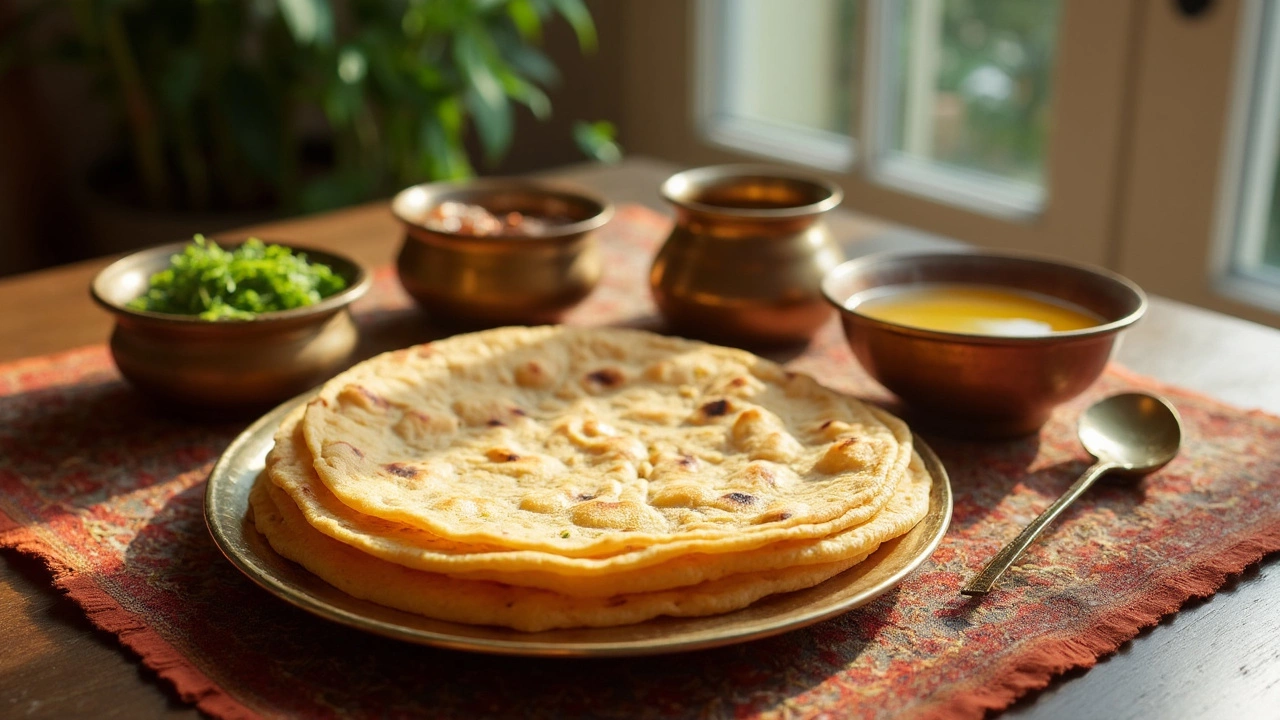Roti Dining: Master Soft, Fluffy Flatbreads Every Time
When working with Roti, a thin Indian flatbread made from whole‑wheat flour, water, and a pinch of salt. Also known as chapati, it serves as the everyday companion to curries, dals and sauces across the subcontinent. Baking soda, a leavening agent that creates carbon‑dioxide bubbles when heated can boost softness, while a splash of oil, usually a neutral vegetable oil added to the dough improves pliability and flavor. Some cooks even toss in a pinch of baking powder, a blend of acid and base that adds extra lift for a puffier bite. These ingredients together shape the texture, taste and puff‑ability of roti, making each round a small experiment in chemistry and tradition.
Key Factors that Shape a Perfect Roti
First, the dough’s hydration matters. Too dry and the roti cracks; too wet and it sticks to the pan. Aim for a soft, non‑sticky ball that feels pliable after a few minutes of kneading – the gluten needs time to relax, which is why many recipes suggest resting the dough for 15‑30 minutes. Second, the cooking surface influences puff. A hot, evenly heated tawa or skillet creates steam inside the roti, forcing it to puff up like a little balloon. When you hear that gentle sizzle, it’s a sign the surface is ready. Third, the use of leavening agents like baking soda or powder should be measured. A quarter‑teaspoon per kilogram of flour is enough to lift the crumb without giving a soapy taste. Fourth, oil can be mixed in at the very start or brushed on the dough after rolling – both methods add moisture and help the roti stay soft after cooling. Finally, the rolling technique matters: roll the dough into a thin disc, about 1‑2 mm thick, and try not to over‑handle it. Over‑rolling squeezes out the air pockets you’ve just created, leading to a flat, dense roti that refuses to puff.
When you combine these tips – proper hydration, brief resting, a hot pan, measured leavening, and a touch of oil – the result is a roti that pops up with airy pockets, stays soft for minutes, and pairs perfectly with any curry, dal or chutney. Below you’ll find a curated group of articles that dig deeper into each of these areas: why roti sometimes won’t puff, the science behind baking soda in flatbreads, how oil timing changes texture, and the truth about using baking powder for extra fluff. Whether you’re a beginner looking for a reliable soft‑roti method or an experienced cook tweaking the perfect puff, these reads will give you actionable insights to up your roti game.

Roti for Weight Loss: Breakfast, Lunch, or Dinner?
Explore the best time to eat roti for weight loss, understanding how many calories are in 1 roti, and tips for its inclusion in your diet. With insights into the caloric content with sabzi and ghee, learn how to use roti effectively for achieving your fitness goals. Balance your meals smartly with this staple to maintain a healthy weight.